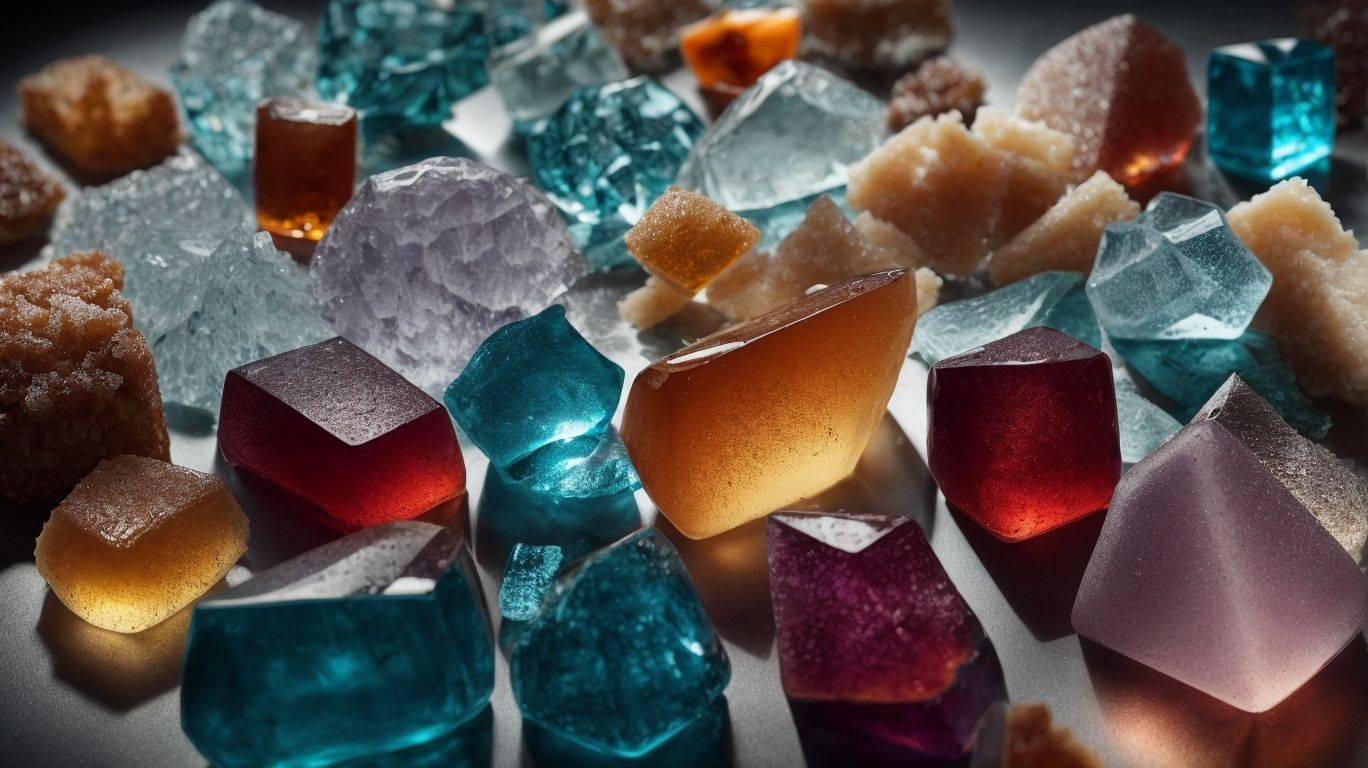Glucose, also known as dextrose, is a simple sugar that is naturally found in fruits and vegetables and is an essential source of energy for the body. In the food industry, glucose has various uses ranging from a sweetener to a preservative and thickening agent. The versatile properties of glucose make it a popular ingredient in many processed foods. However, with concerns over its potential health effects, it is important for consumers to be aware of the role of glucose in the food industry and make informed choices about their diet.
As a sweetener, glucose is used in various forms such as glucose syrup, dextrose, and high fructose corn syrup. These sweeteners not only add a sweet taste to foods but also provide texture and assist in browning and caramelization. Glucose is also used as a thickening agent in products like sauces, jams, and ice creams. Its ability to absorb and hold water makes it a useful ingredient in preserving the texture and consistency of these foods. Additionally, glucose has preservative properties that can help extend the shelf life of products by inhibiting the growth of microorganisms. It is also used as a flavor enhancer, providing a milder and more rounded taste to various products.
The different types of glucose used in the food industry include glucose syrup, dextrose, and high fructose corn syrup. These variations differ in their sweetness levels and are used in different products depending on their desired properties. For example, glucose syrup is commonly used in confectionery items, while high fructose corn syrup is commonly used in soft drinks and baked goods.
While glucose has many uses in the food industry, consuming too much of it can have negative health effects. Excessive consumption of glucose can lead to weight gain and increase the risk of developing type 2 diabetes. It can also contribute to tooth decay and impact blood sugar levels, especially in individuals with diabetes.
To make informed choices about glucose in food, consumers should pay attention to nutrition labels and choose whole foods over processed ones. Moderation and balance are also key, as consuming small amounts of glucose as part of a well-rounded diet is generally safe for most individuals. By being aware of the role of glucose in the food industry and making mindful choices, consumers can enjoy their favorite foods while keeping their health in check.
Key Takeaways:
What Is Glucose?

Photo Credits: Chemicalglossary.Net by Bruce Garcia
Glucose is a crucial type of sugar that is necessary for producing energy in the body. It is a simple carbohydrate that is easily broken down and absorbed into the bloodstream. This essential nutrient can be found in many foods, including fruits, vegetables, and honey. In the food industry, glucose is utilized as a sweetener and a source of energy, providing a quick boost and enhancing the flavor of various products. Additionally, it is a key ingredient in the production of certain food additives and can also be found in some pharmaceutical products. Overall, glucose plays a critical role in the food industry, not just as a sweetener, but in various other applications as well.
How Is Glucose Used in the Food Industry?

Photo Credits: Chemicalglossary.Net by Aaron Hall
Glucose, a simple sugar, plays a crucial role in the food industry. It is commonly known as a sweetener, but its uses go far beyond just adding sweetness to food products. In this section, we will explore the various ways in which glucose is utilized in the food industry. From being a sweetener to a thickening agent, a preservative to a flavor enhancer, we will delve into the different functions of glucose and how they contribute to the overall taste, texture, and shelf-life of various food products.
1. As a Sweetener
As a sweetener, glucose is widely used in the food industry to add sweetness to various products. To effectively use glucose as a sweetener, follow these steps:
- Determine the desired level of sweetness for the product.
- Calculate the appropriate amount of glucose needed based on the sweetness level.
- Incorporate the glucose into the recipe, ensuring even distribution.
- Consider the impact of glucose on other ingredients and adjust the recipe accordingly.
- Test the sweetness level and make any necessary adjustments before finalizing the product.
- Label the product appropriately, indicating the use of glucose as a sweetener.
By following these steps, food manufacturers can effectively utilize glucose as a sweetener in their products while meeting consumer preferences and regulatory requirements.
2. As a Thickening Agent
Glucose is a commonly used thickening agent in the food industry due to its ability to enhance texture and improve consistency. Here are some steps to understand its use as a thickener:
- Identify the role of glucose in the recipe, whether it is to provide viscosity, stabilize emulsions, or prevent crystallization.
- Determine the appropriate type of glucose for thickening, such as glucose syrup or dextrose, based on the desired texture and application.
- Add glucose gradually while stirring to avoid clumping or lumps and ensure even distribution.
- Apply heat, if necessary, to activate the thickening properties of glucose and achieve the desired texture.
- Monitor the thickness and adjust the amount of glucose as needed to achieve the desired consistency.
- Note any potential interactions with other ingredients and consider the impact on taste, appearance, and shelf life.
By following these steps, the food industry can effectively utilize glucose as a reliable thickening agent in various products.
3. As a Preservative
Preservatives play a crucial role in extending the shelf life of food products. Glucose, as a preservative, offers several benefits. Here are the steps involved in using glucose as a preservative:
- Preparation: Dissolve glucose powder in water to create a preservative solution.
- Application: Spray or dip food products in the glucose solution to create a protective coating.
- Inhibition: Glucose acts as a preservative and inhibits the growth of bacteria, yeast, and mold, preventing spoilage.
- Antioxidant properties: Glucose also serves as an antioxidant, reducing the oxidation of fats and oils in food products.
- Texture retention: By incorporating glucose as a preservative, food manufacturers can ensure that their products have a longer shelf life and maintain their taste and quality while also helping retain their texture and freshness.
By incorporating glucose as a preservative, food manufacturers can ensure that their products have a longer shelf life and maintain their taste and quality.
4. As a Flavor Enhancer
As a flavor enhancer, glucose is commonly used in the food industry to improve the taste of various products. It helps to enhance the natural flavors of food items and provides a sweet and pleasant taste. Glucose can be found in a wide range of food products such as sauces, dressings, baked goods, and beverages. Its ability to enhance flavors makes it a popular choice among food manufacturers. When used in moderation, glucose can contribute to a more enjoyable eating experience. However, it is important for consumers to be aware of their glucose intake and choose products that align with their dietary preferences and health goals.
I have a vivid memory of baking cookies for a family gathering. As I followed the recipe, I added a small amount of glucose to enhance the flavor of the cookies. The result was amazing! The cookies had a rich, delicious taste that everyone loved. It was the perfect touch to make the cookies even more enjoyable. Since then, I have come to understand how glucose can be a valuable tool in the food industry for enhancing flavors and creating memorable culinary experiences.
What Are the Different Types of Glucose Used in the Food Industry?

Photo Credits: Chemicalglossary.Net by Juan Thompson
In the food industry, glucose plays a crucial role as a sweetener and beyond. However, not all glucose is created equal, and there are various types used in food production. In this section, we will discuss the different forms of glucose found in the food industry. From glucose syrup to dextrose to high fructose corn syrup, each type has its unique properties and uses in food production. Understanding these differences can shed light on the widespread use of glucose in the food industry and its various applications.
1. Glucose Syrup
Glucose syrup is a versatile ingredient widely used in the food industry for its functional properties and sweetening capabilities. Here are the steps to effectively understand and utilize glucose syrup:
- Understanding glucose syrup: Glucose syrup is a liquid sweetener made from corn starch and contains glucose molecules.
- Application as a sweetener: Glucose syrup adds sweetness to a variety of products like candies, baked goods, and beverages.
- Role as a thickening agent: Glucose syrup enhances viscosity and texture in foods like sauces, ice cream, and confectionery.
- Preservative properties: Glucose syrup helps maintain the freshness and extend the shelf life of certain food products.
By incorporating glucose syrup wisely, food manufacturers can improve taste, texture, and stability in their products.
2. Dextrose
Dextrose, also known as glucose, is a type of sugar commonly used in the food industry for various purposes. It is often added as a sweetener to provide a quick source of energy and enhance the taste of products like baked goods and beverages. Additionally, dextrose can be used as a thickening agent to improve the texture and consistency of foods such as sauces, dressings, and desserts. It also has preservative properties, helping to prolong the shelf life of certain products.
However, it is important for consumers to be mindful of their dextrose intake, as excessive consumption can lead to weight gain, an increased risk of type 2 diabetes, tooth decay, and impact blood sugar levels. To make informed choices, consumers should read nutrition labels, opt for whole foods, and practice moderation and balance in their overall diet.
3. High Fructose Corn Syrup
High fructose corn syrup (HFCS) is a widely used sweetener in the food industry due to its affordability and versatility. When choosing food products, it’s important to understand the potential impact of HFCS on health. Here are steps to consider when making informed choices about HFCS in food:
- Read nutrition labels: Look for HFCS on ingredient lists and be mindful of the amount used in the product.
- Choose whole foods: Opt for whole, unprocessed foods that are naturally low in added sugars, including HFCS.
- Moderation and balance: Enjoy foods containing HFCS in moderation as part of a balanced diet, ensuring overall sugar intake is controlled.
What Are the Potential Health Effects of Consuming Glucose in Food?

Photo Credits: Chemicalglossary.Net by William Martinez
As a widely used sweetener in the food industry, glucose has become a staple in many of our favorite treats and snacks. However, this simple sugar can have potential health consequences when consumed in excess. In this section, we will delve into the various potential health effects of consuming glucose in our food. From weight gain and increased risk of type 2 diabetes, to tooth decay and its impact on blood sugar levels, let’s take a closer look at the potential risks associated with this commonly used ingredient.
1. Weight Gain and Obesity
Consuming glucose in food can potentially lead to weight gain and obesity, making it a health concern to be mindful of. To make informed choices about glucose intake, consider the following:
- Read Nutrition Labels: Take note of glucose content on food labels and keep track of your daily intake.
- Choose Whole Foods: Opt for fresh fruits, vegetables, whole grains, and lean proteins instead of processed foods with added glucose.
- Moderation and Balance: Practice portion control and maintain a balanced diet to avoid excessive consumption of glucose.
2. Increased Risk of Type 2 Diabetes
Consuming large amounts of glucose in food can heighten the likelihood of developing type 2 diabetes. When glucose is consumed, it raises blood sugar levels, prompting the release of insulin to regulate them. Over time, repeated high blood sugar levels can lead to insulin resistance, a major contributor to type 2 diabetes.
To make educated decisions about glucose in food and decrease the risk, keep in mind the following tip: choose whole foods that are naturally low in added sugars and rich in fiber to assist in regulating blood sugar levels and maintaining a nutritious diet.
3. Tooth Decay
Tooth decay is one of the potential health effects of consuming glucose in food. Here are some steps to minimize its impact:
- Practice good oral hygiene: Brush your teeth at least twice a day with fluoride toothpaste and floss daily.
- Limit sugary and acidic foods: Reduce consumption of foods and beverages high in glucose and other sugars.
- Drink water after eating: Rinse your mouth with water after consuming glucose-containing foods to help wash away residue and prevent tooth decay.
- Visit the dentist regularly: Schedule regular dental check-ups and cleanings to detect and treat any early signs of tooth decay.
By following these steps and maintaining a balanced diet, you can make informed choices to protect your oral health and prevent tooth decay.
4. Impact on Blood Sugar Levels
Consuming glucose-rich foods can have an impact on blood sugar levels. To manage this, follow these steps:
- Balance meals: Pair glucose-rich foods with protein, fiber, and healthy fats to slow down the absorption of glucose.
- Avoid refined sugars: Choose whole foods instead of processed snacks and desserts that contain high levels of glucose.
- Portion control: Be mindful of serving sizes to prevent a rapid spike in blood sugar levels.
Pro-tip: Regular physical activity can help regulate blood sugar levels by increasing insulin sensitivity.
How Can Consumers Make Informed Choices About Glucose in Food?

Photo Credits: Chemicalglossary.Net by Jordan Johnson
As consumers, it is important to be aware of the role of glucose in the food we consume. However, with so many products on the market, it can be overwhelming to know how to make informed choices about glucose in our food. In this section, we will discuss practical ways to be more mindful of our glucose intake. From reading nutrition labels to choosing whole foods, to practicing moderation and balance, these tips will help you navigate the complex world of glucose in the food industry.
1. Reading Nutrition Labels
When examining nutrition labels, it is crucial to look beyond just the number of calories. Here are some steps to keep in mind:
- Check serving size: Ensure that you are comparing similar portion sizes.
- Look at total sugars: Glucose may be listed under various names, such as dextrose or corn syrup.
- Check for added sugars: Be on the lookout for ingredients like high fructose corn syrup or cane sugar.
- Consider other nutrients: Look for sources of fiber, protein, and healthy fats to make a well-rounded choice.
- Pay attention to % Daily Value: Aim for foods with lower percentages of added sugars.
2. Choosing Whole Foods
When it comes to choosing whole foods, here are some steps to consider:
- Focus on fresh produce: Opt for fruits, vegetables, and whole grains, which are naturally low in added glucose.
- Check ingredient lists: Avoid processed foods that contain added sugars, including glucose syrups or high fructose corn syrup.
- Look for whole food alternatives: Instead of reaching for pre-packaged snacks, choose whole fruits, nuts, or seeds for a healthier option.
- Cook from scratch: By preparing meals at home, you have control over the ingredients and can limit the amount of added glucose.
- Choose lean protein sources: Opt for lean meats, poultry, fish, or plant-based proteins instead of processed meats that may contain added sugars.
3. Moderation and Balance
Moderation and balance are crucial when it comes to consuming glucose in food. To make informed choices, follow these steps:
- Check nutrition labels to determine the amount of glucose and other sugars in the product.
- Opt for whole foods that naturally contain glucose, such as fruits and vegetables, rather than processed foods with added sugars.
- Be mindful of portion sizes and limit consumption of foods high in glucose.
By practicing moderation and balance, individuals can enjoy the benefits of glucose in food without overconsumption or negative health effects.
Frequently Asked Questions
What is the role of glucose in the food industry?
Glucose, also known as sugar, plays multiple functions in the food industry. It serves as a sweetener, preservative, texture modifier, flavouring and colouring agent, and bulking agent in various food products.
What are some common foods that contain added sugar?
Processed foods, flavoured beverages, and bakery products are some common examples of foods that often contain added sugar. These added sugars can contribute to increased total calories and have potential impacts on nutrition and public health.
Can sugar be replaced in recipes?
Yes, sugar can be replaced in recipes, but it may be a challenging and complex process. Some practical problems to consider include finding suitable replacement ingredients, adjusting for texture, taste, and colour, and the overall impact on the sensory performance of the original product.
How can sugar be replaced in foods?
There are various options for replacing sugar in foods, such as using non-caloric sweeteners, protein-based sweeteners, or sweetness modulators. However, it is essential to carefully consider the physical and chemical properties of these alternatives and their potential impact on the final product.
What is the Maillard reaction, and how does it relate to sugar in food?
The Maillard reaction is a chemical reaction that occurs when sugar is heated, resulting in a golden brown color in baked goods and sauces. This reaction is responsible for the caramelization and browning of sugar in food, contributing to both flavor and appearance.
How can I reduce the amount of sugar in my diet?
Gradually reducing the amount of sugar in your diet by making small increments and adjusting to taste, texture, and color preferences can be an effective way to lower your intake. However, it is crucial to be aware that replacing sugar with other ingredients may result in a product with a similar or even higher calorie content.
